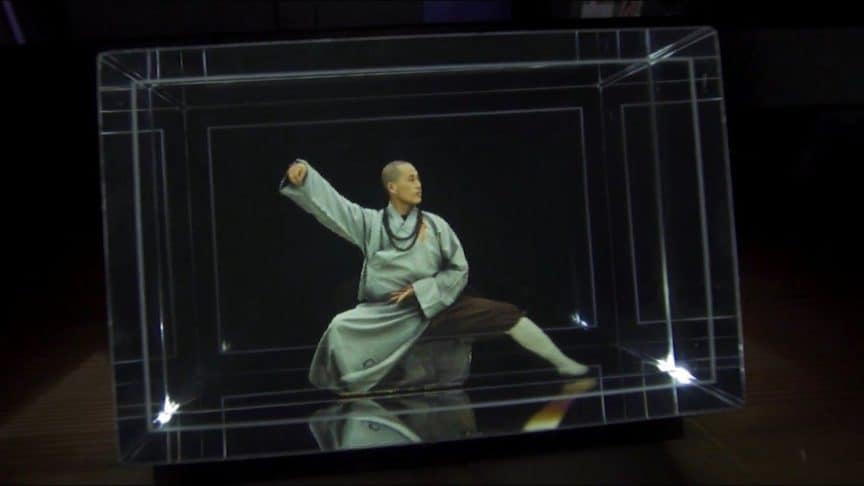Can the saying ‘the only constant thing in the world is change’ be any more accurate? When it comes to technology, innovation has always been the change that comes along another after the other. One example is the VR display we were accustomed to which let us experience what seems like a parallel universe. Now, Looking Glass Factory took it up a notch and created another version of virtual reality through a looking glass holographic display. Here is how it is different from the typical VR display, and why you should consider trying it out, too.
Virtual Reality in Another Dimension
This looking-glass holographic display won’t bring you to Wonderland like what it did to Alice in Through The Looking Glass. However, it indeed gives an experience to another dimension. The usual virtual reality game requires you to use an AR/VR goggle to experience it at is best. The look glass holographic doesn’t need it; technically, you only need the holographic, the presence of mind, and your hands. It is in a different dimension and light because it is like another parallel universe in the multiverse of technology we are in.
Also, take note that it is still three-dimensional without the hassle of the cumbersome 3-D glasses. So, you can expect it to be immersive as just what you expected it to be. It doesn’t give you the 180-degree experience and full surround. You can be confident that you won’t be seasick to it as well. Remember how some users of the VR with 3-D goggles complain about getting dizzy the first time they tried it? With holographic dimension, the user can get rid the fear of nausea while playing.
What’s Inside the Hologram
Are you familiar with the glass block windows in architecture? The holographic looks like that, a huge glass block. But undoubtedly, it better than those. It is clear and not with the iceberg, pristal, or bromo effect some glass block windows have. It is, in fact, made of different layers of refractive substance. Its software has 45 perspective of the scenes or object; it is how the vision refracts depending on your viewing angle.
Aside from being super stereoscopic, t is a combination of volumetric display and multiview 3D technologies at its finest. It weighs 2.2kg with dimension structure of 8.2” x 3.7” and 6.1” in length, weight, height, respectively. Its layers are comprised of:
- Traces – which is responsible for the front and back depth cues.
- Optical film – which sharpens and intensifies the subpixels.
- The protective layer and the optical film
- LCD – which shows the 45 unique perspectives of 3D views at 60 FPS or also known as frames per second. Low-end digital games have a frame rate of 30 FPS only so that you can be confident of its high quality.
- High refractive index material – which is accountable for the shifts of the focal panes.
- Lenticular lens – the lenses that deliver the 45 display viewpoints to both users and viewers, whichever angle they are in. Anyone present in the area can view the holographic glass. So, these lenses will give the 3-D experience to everyone and not just to the person playing it.
Aside from playing and viewing it, the display lets the player interacts with other objects. However, there are also drawbacks to this innovation. You might want to take this in as well for fair judgment:
- The glass comes in two sizes: 8.9 and 15.6 inches. The former seems a little small if you are the type of person who enjoys games on giant screens. Its viewing cone is 90 degrees, and the effect may fade fast when you are off angle by 45 degrees. Still, it is okay to be viewed by a few people given its relatively small size.
- It has a low resolution. The 8.9 inches has 4MP display while the larger one in 15.6 inches has 8 megapixels. You may think it is reasonable for the size but only when you don’t consider the 45 viewpoints it refracts. Divide those megapixels in the views, and you will get a relatively low result. If you play with it in close proximity, you might notice how the details are not that intricate.
Also, it is meant to be played where there is excellent lighting. But, try to play it in the dark, and you will see how the colors in the hologram become more intense and highlighted. In the dark, you may also get rid of the distraction of your own hands. The way on how you want to experience it solely depends on you.
Where You Can Buy It
It is now open for pre-order on Kickstarter, and they will ship as early as September 2018 with 100 units. The rest of the shipment will happen in December. It is initially $600, but you can get it for $450 if you pre-order now. Mind you; it is for a limited time only, so better get your hands on it now if you want it. The bigger size will cost $2000 on pre-order compared to its $3000 original price.
The standard looking glass is in 8.9 inches and is perfect for desks of the 3D creators. Meanwhile, the 15.6 inches large looking glass is ideal for design review, retail displays, and simulation. Additionally, the glass holographic has perfect feature for creators who love to experiment with anything from stereoscopic drone scans to volumetric videos. Creative people who work on designs can create their very own holographic apps through Unity SDK. The animation and 3D models can be viewed directly inside the holographic glass.
Conclusion
Since this creation does not have any augmented and virtual reality goggles, it is safer to be played with by the younger age. In fact, it can be more enjoyable to play with friends or families because anyone can watch each other play. It is unlike the virtual reality games that you can only watch a friend enjoy the experience in his own world.
References:

